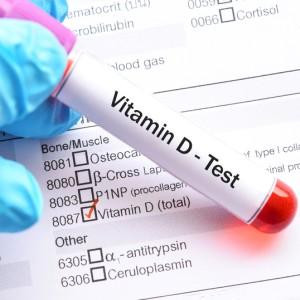A vitamin D 25 hydroxy test is a blood test that measures the level of 25-hydroxyvitamin D in the body. This form of vitamin D is the most accurate marker of overall vitamin D status, as it reflects both vitamin D obtained from diet and sunlight exposure. It is essential to maintain adequate levels of vitamin D in the body, as it plays a vital role in many bodily functions including bone health, immune system function, and muscle strength.
When to go for Vitamin D 25 Hydroxy Test?
The vitamin D 25 hydroxy test is typically ordered when an individual has symptoms of vitamin D deficiency or if they are at a higher risk of deficiency due to factors such as limited sun exposure, certain medical conditions, or taking medications that interfere with vitamin D metabolism. Symptoms of vitamin D deficiency can include:
- Fatigue
- Muscle weakness
- Bone pain
- Increased risk of fractures.
It is also common for healthcare providers to order this test as part of a routine health check or to monitor vitamin D levels in individuals with conditions such as osteoporosis or multiple sclerosis.
Procedure for Having Vitamin D 25 Hydroxy Test
The vitamin D 25 hydroxy test is a simple blood test that is performed in a laboratory or at a healthcare provider's office. A healthcare provider will take a blood sample from a vein in the arm using a needle and send it to a laboratory for analysis. It is important to choose a reliable diagnostic lab for accurate results.
Normal Range/Levels
The optimal vitamin D level varies depending on age and other factors, but generally, a level of 20-50 ng/mL is considered sufficient for most individuals. A level below 20 ng/mL is considered deficient, while a level above 50 ng/mL is considered higher. It is important to note that the optimal vitamin D level may be different for each individual and that healthcare providers consider many factors when interpreting test results and determining the appropriate treatment.
If an individual has a low vitamin D level, a healthcare provider may recommend increasing vitamin D intake through diet or supplements. Foods that are high in vitamin D include fatty fish, such as salmon and mackerel, as well as fortified foods such as milk and cereal. Vitamin D supplements are also available over the counter in various forms, including pills and liquid drops. It is important to speak with a healthcare provider before starting any new supplement, as taking too much vitamin D can be harmful.
Vitamin D deficiency is a common problem, particularly in older adults and individuals with limited sun exposure. It is important to maintain adequate levels of vitamin D for optimal health, and the vitamin D 25 hydroxy test is an effective way to determine an individual's vitamin D status. If a deficiency is detected, a healthcare provider can recommend appropriate treatment to help maintain healthy vitamin D levels.

